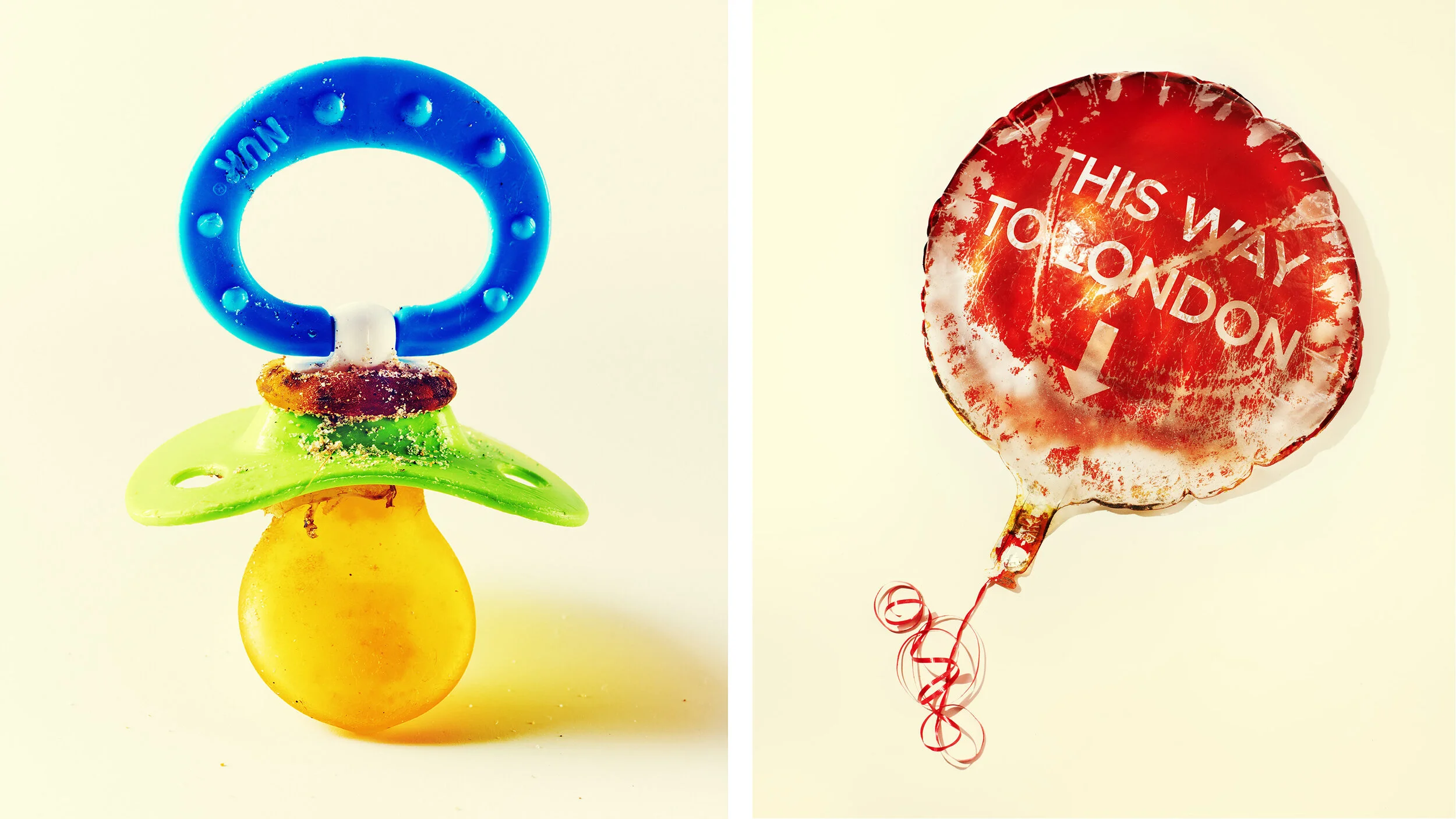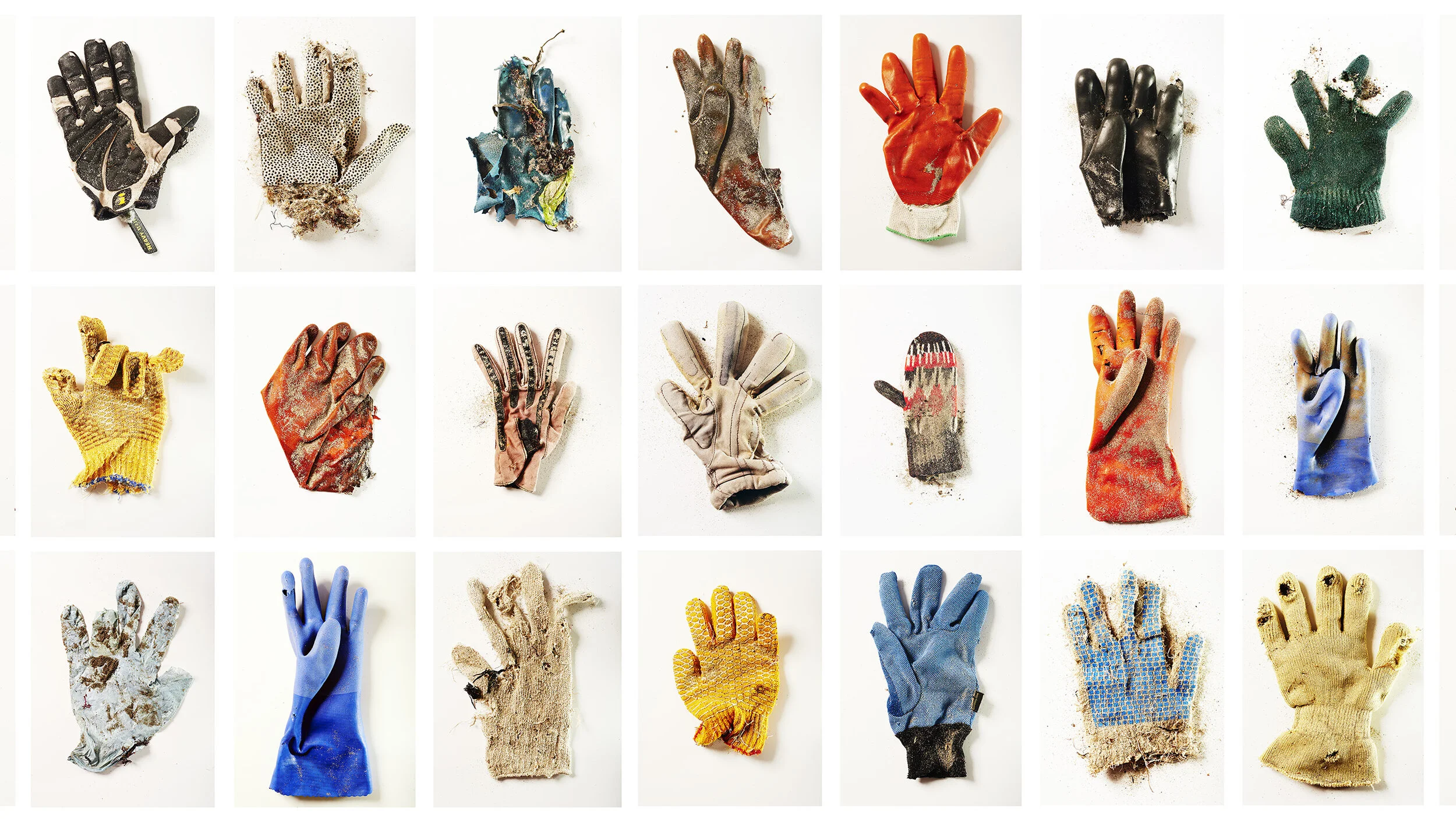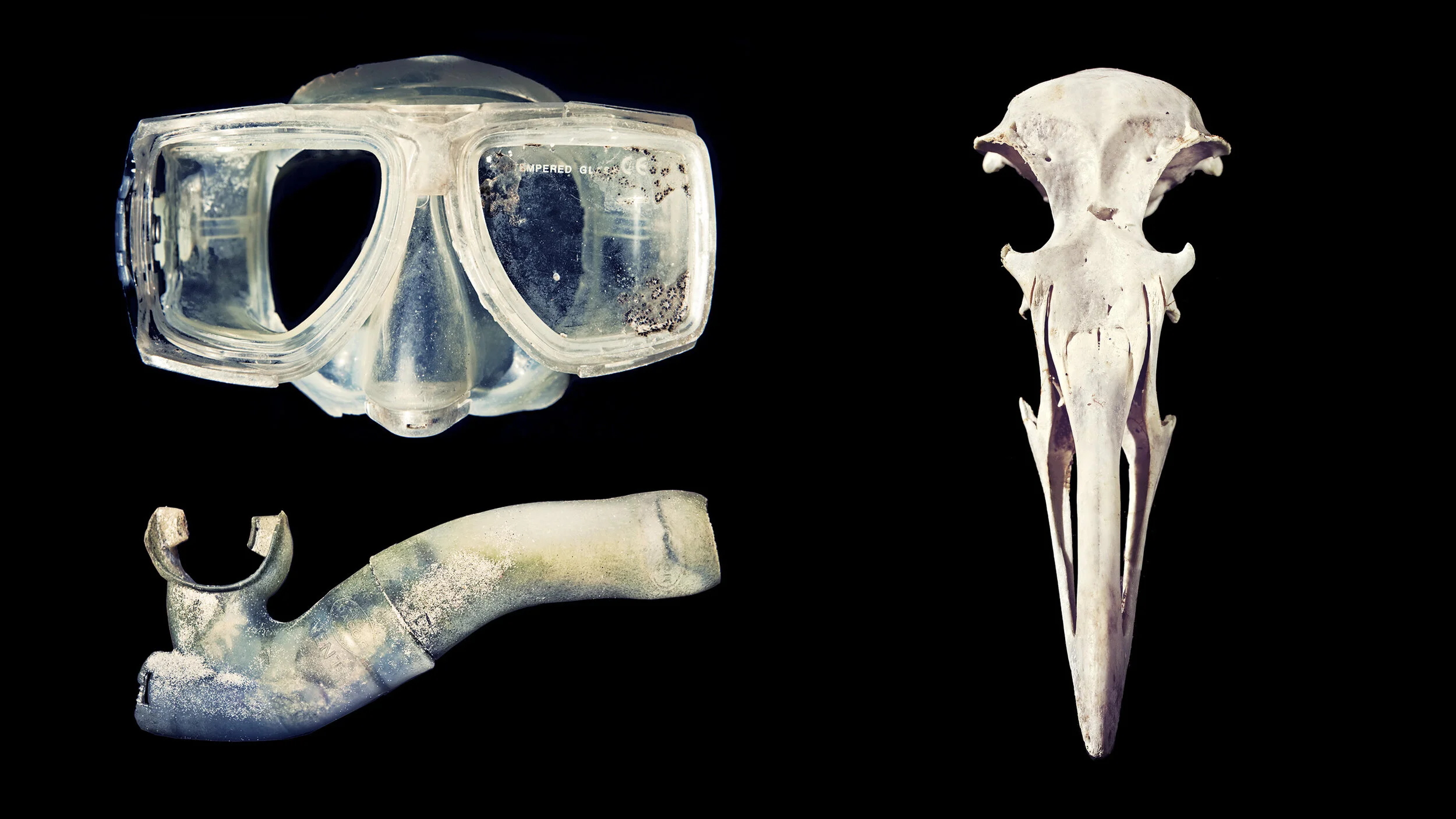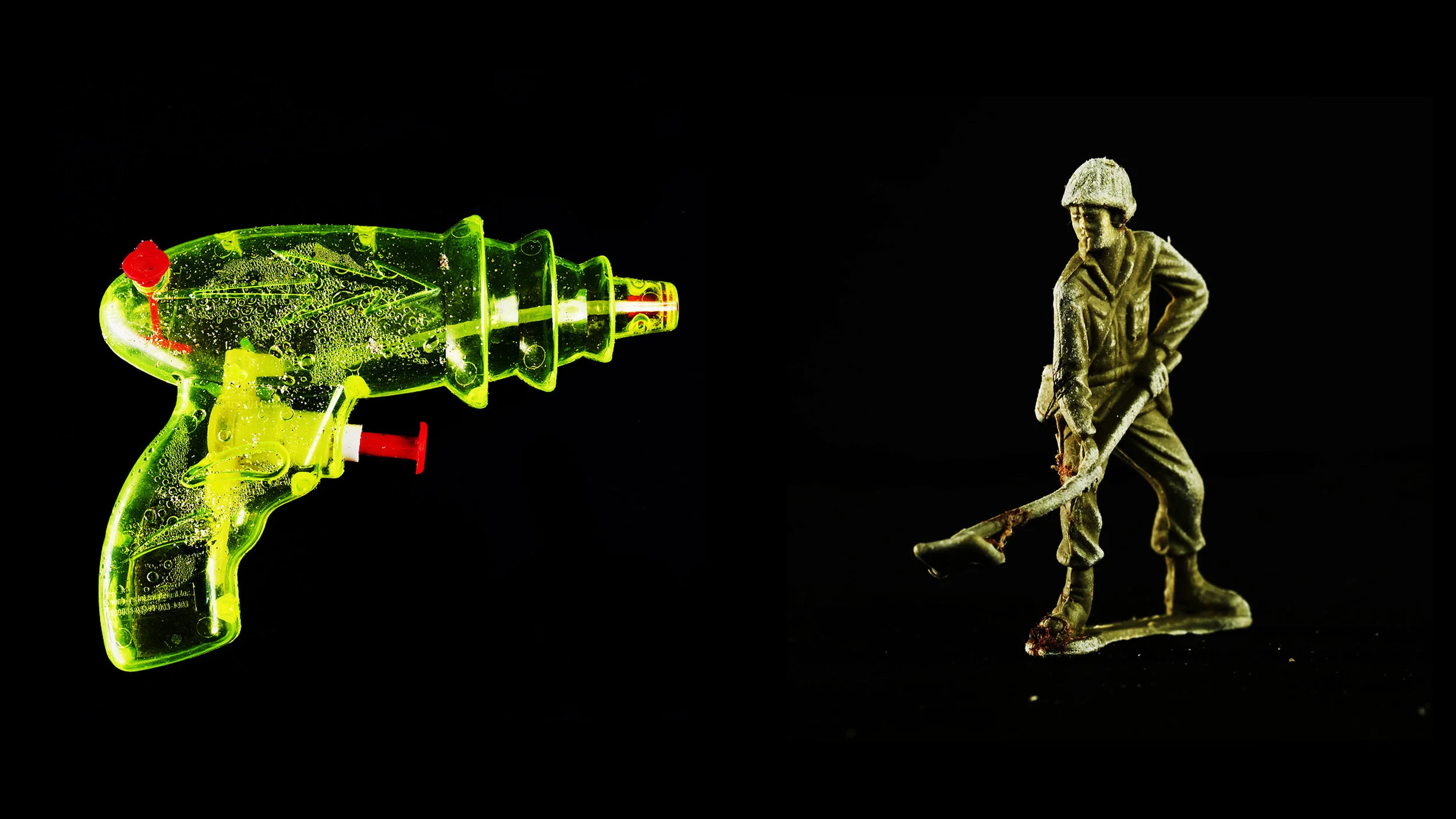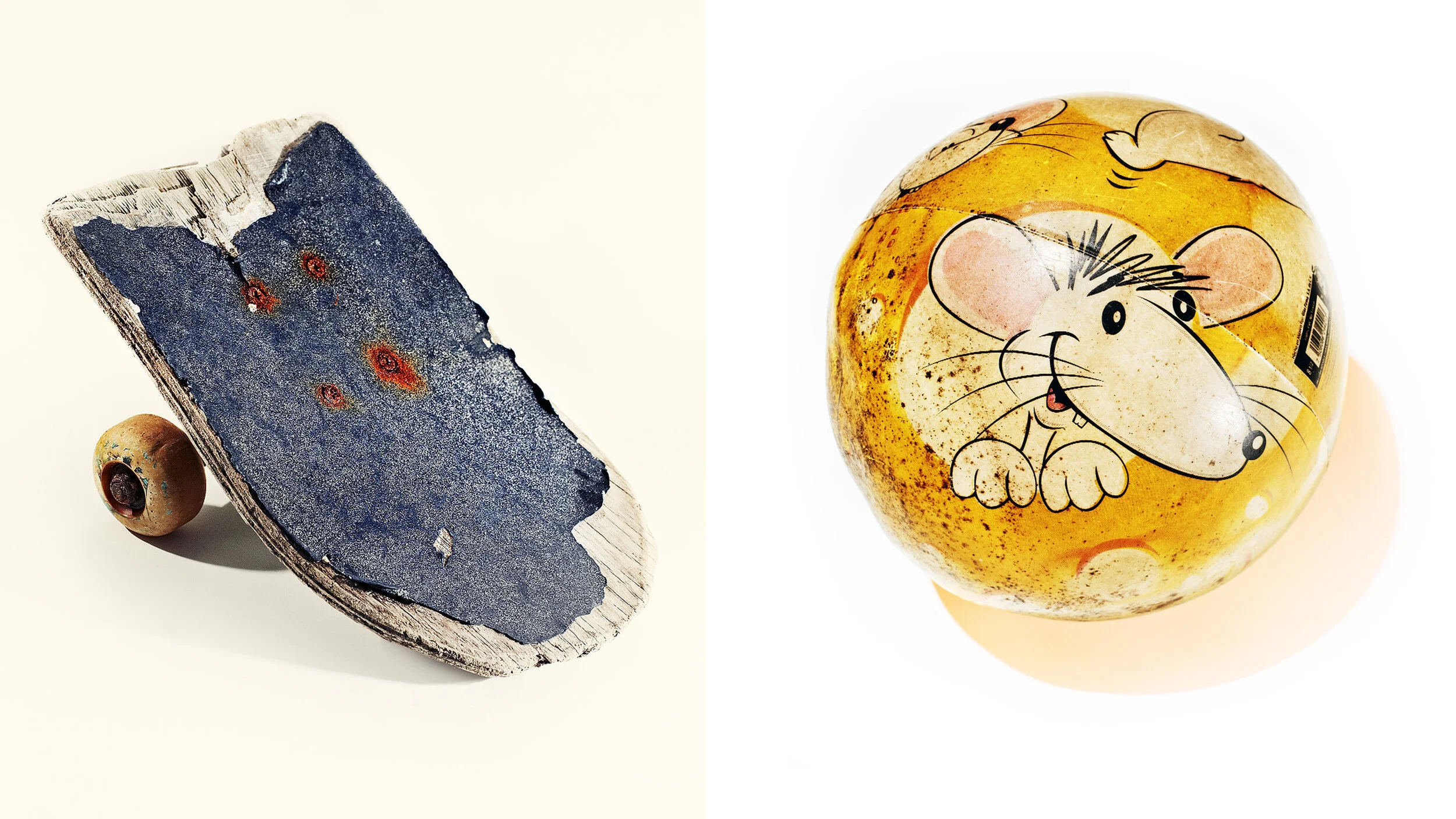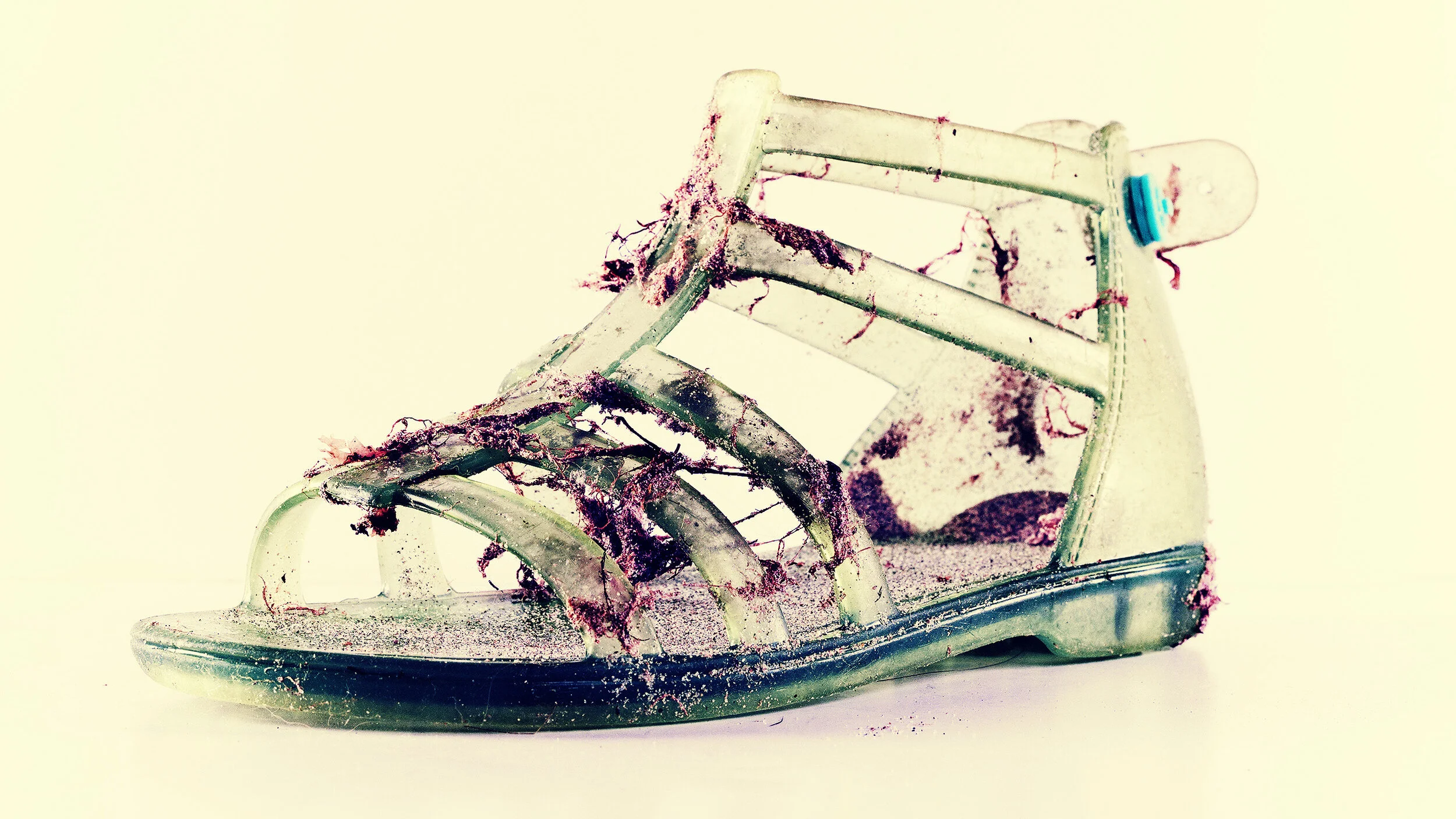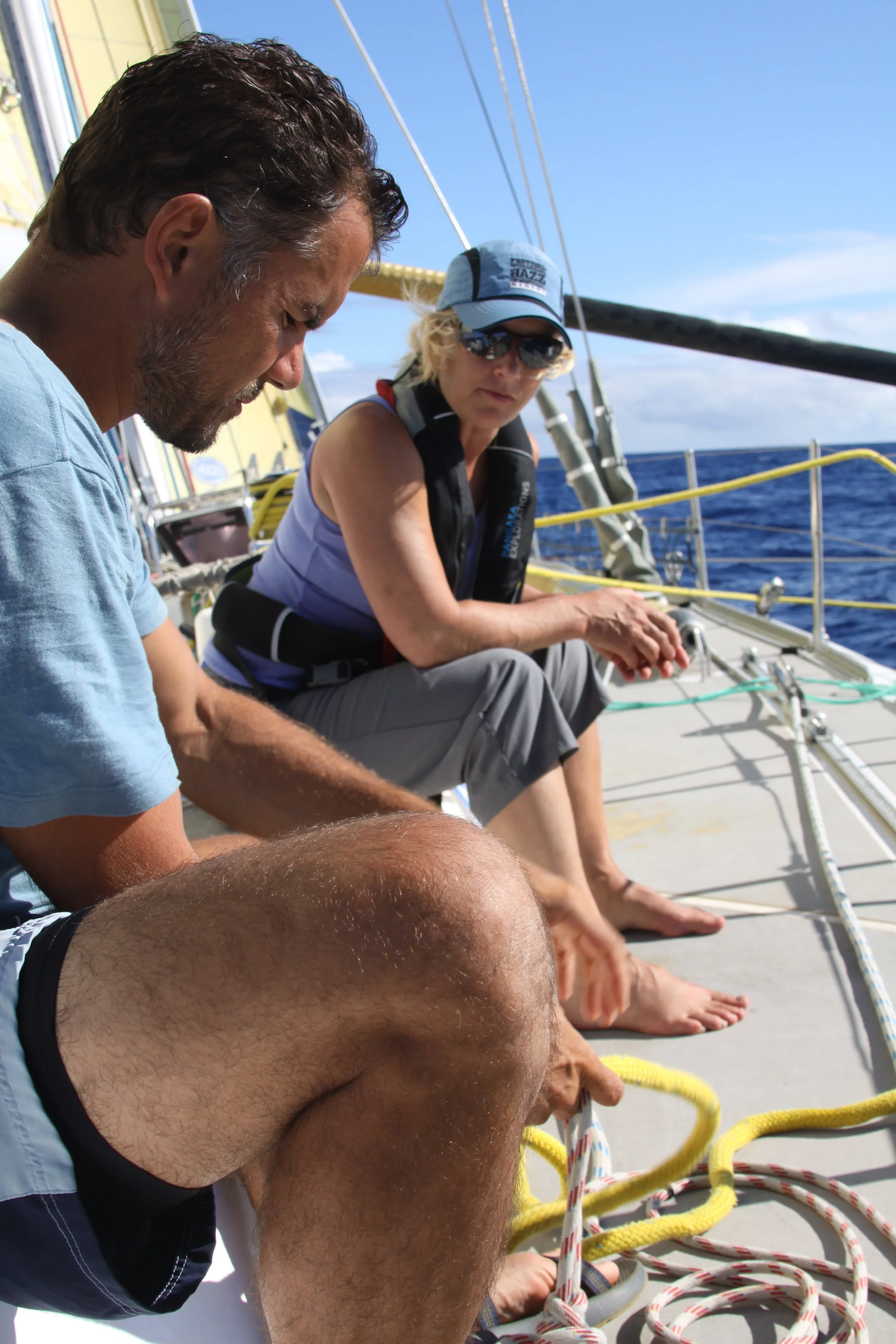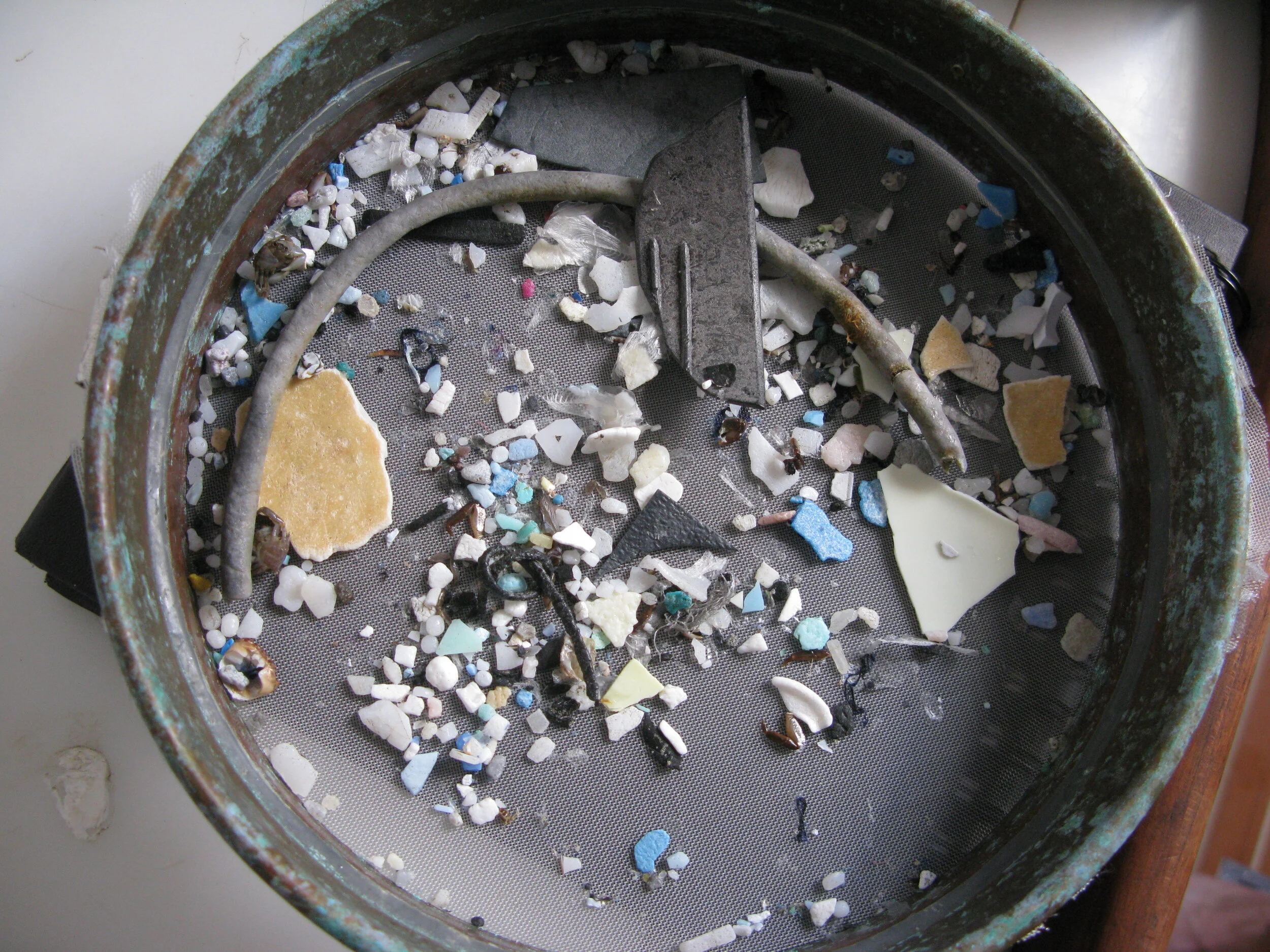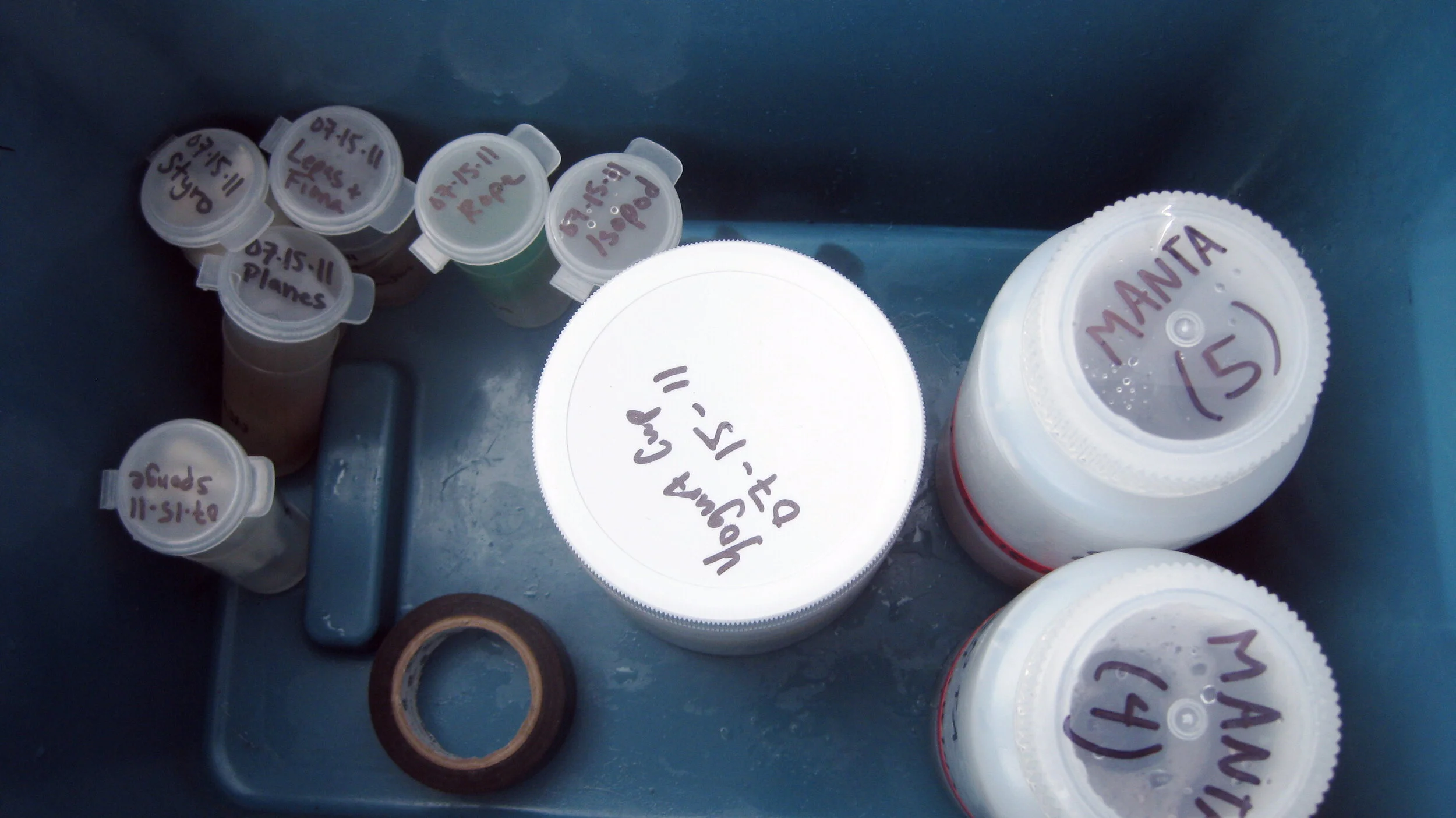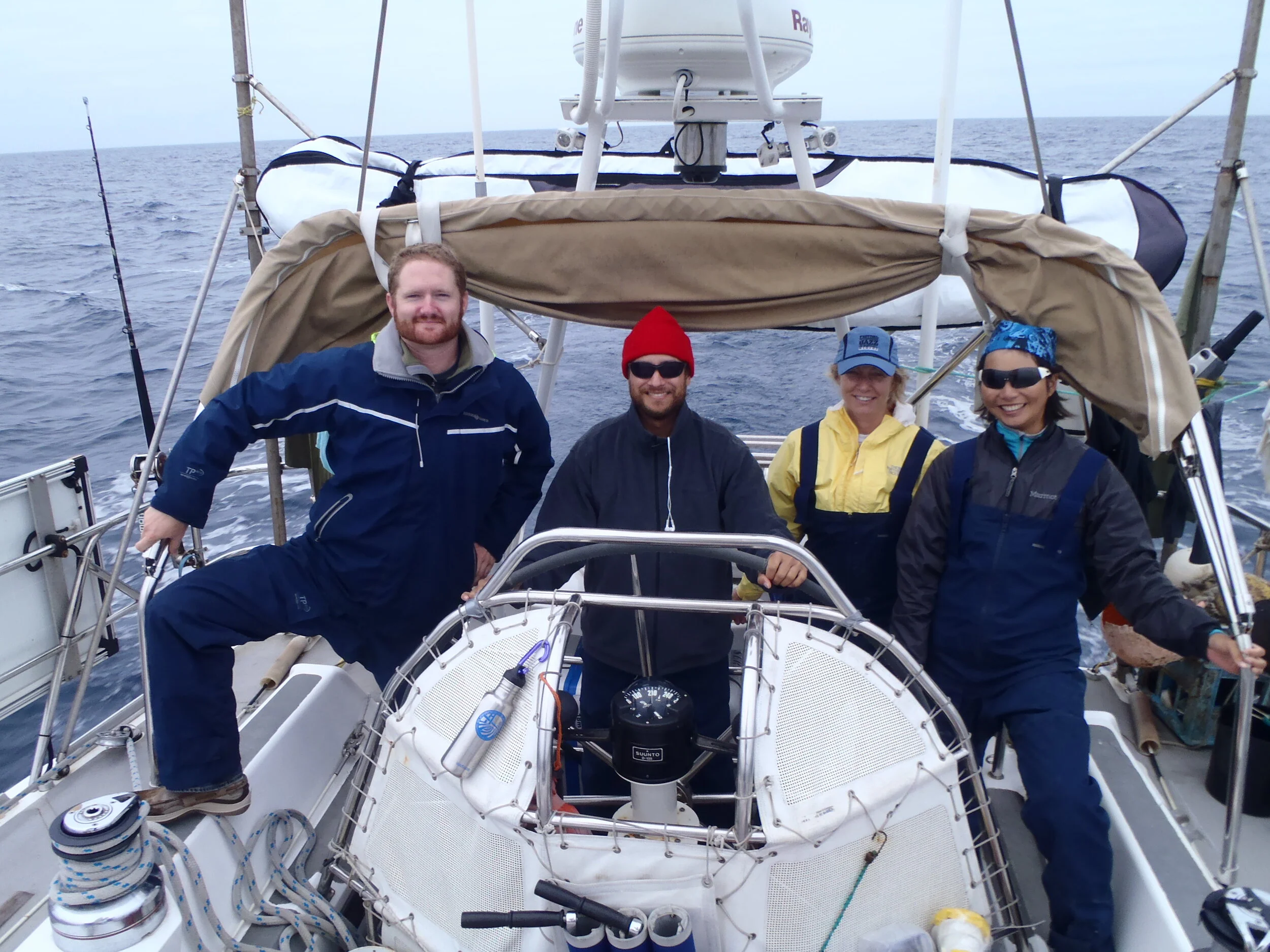One Word: Plastics
Karen Ristuben has seen the future of our oceans. It’s not pretty.
Photographs by Michael Prince
Editor’s note: The artwork accompanying this story is from an ongoing project entitled “Stuff I Found on the Beach” by Gloucester photographer Michael Prince.
Karen Ristuben wanted to know more.
In Gloucester, where she lives, life and livelihood are deeply connected to the ocean. And plastic pollution is a serious problem.
On our beaches we see all kinds of plastic: bottles, nylon netting, even pieces of medical equipment. It’s easy to mistake a small piece of colored plastic for sea glass. Maybe we pick it up, maybe we ignore it.
This is a problem that humans created. The depth and range of ocean plastic pollution is vast and we see its impact right here on Cape Ann.
And right on Rocky Neck’s Wonson Cove, where Ristuben lives.
In 2011, Ristuben, an artist, lawyer, educator, community advocate, civic leader, and environmentalist, journeyed to the North Pacific Gyre. She traveled to the 12.4 million square mile oceanic ecosystem — home to the Great Pacific Garbage Patch — aboard Pangaea Exploration’s Sea Dragon research vessel to document the amount of floating debris in the ocean.
Discovered in the mid-1980s, the patch has been estimated to cover an area as large as 5.8 million square miles. (That’s bigger than Canada). It is thick with plastic that has degraded into microparticles, and it’s having a major impact on both marine and human health.
. . . . .
Where did your passion for this issue begin?
I live on Wonson Cove in East Gloucester. I was seeing firsthand the pollution impact on marine life, and it was disturbing to see so much plastic coming in on the tide. My interest in ocean plastic pollution started through making art.
My love of the ocean, my urge to protect it, and my art all converged when I started working with glass. I’ve always loved working with glass for its reflective and transparent qualities. I experimented with the qualities of glass — how refraction and reflection and transparency work scientifically — as part of my MFA program at Vermont College for Fine Arts in Montepelier. I experimented with clear glass and watery places and started taking photographs. I took car windows and put them out in nature because they are curved and refract and reflect and twist and flip images.
One of my professors noticed that I was interested in working with nature and suggested that I explore the complicated human relationship with the environment. He pushed me to ask questions: What is needed? What is urgent? What does nature need from you?
In answering these questions for myself, I realized that ocean plastic pollution was going to be my direction.
How did this inquiry turn into art?
I picked up trash on Wonson Cove beach for 90 days. I sorted it and washed it and put it in bins. It was an enormous amount of plastic.
I took my collection up to Montpelier and produced an art installation. The plastic problem was consuming me and the art installation was an obvious physical sign of the issue.
I was doing academic research on plastic as a material and conveyor of pollutants in the ocean at the same time that I was working on the art installation. I looked at the ocean plastic pollution issue from different angles.
Plastic breaks down in the ocean into tiny microparticles that contain toxins — which are like poison pills to marine wildlife. I looked at the human relationship with plastics going back to the 1950s and our current plastic waste stream and the lack of waste management when it comes to recycling. My researched included looking at what other countries were doing to reduce plastic pollution in the supply chain.
My trash collection, art installation, and academic research culminated in a multimedia presentation on the issue of our plastic world and how this translated to the little beach outside my window.
How did you find yourself aboard the Sea Dragon?
I decided to go to the next level with my research and ended up on this 72-foot steel-hulled sailboat-turned-research vessel. We traveled from Hawaii through the North Pacific Gyre on a 3,000 mile trip to Vancouver.
Thirteen people were on the boat with me collecting research samples over a three-week period.
We were in the middle of the ocean with no stops or land or other vessels in sight. We had one tack north and one tack east and were underway the whole time.
We took samples including sea water, fish, and plastic. The ship’s trawling system was deployed about 40 times. In every trawl, we picked up plastic that had drifted thousands of miles away from land. Our sampling only skimmed the top 12 inches of the ocean’s surface, which is really a tiny, minuscule sample, but it is an indicator of the plastic that is in the full water column of the ocean.
My colleagues onboard were people who cared about the ocean plastic pollution problem yet came at it from different perspectives. There was a UCLA graduate student studying marine communications; there were two filmmakers from South Korea’s broadcasting service who were there to film the North Pacific Gyre as part of an overall documentary on the oceans; and then there were people like me who wanted to learn more about the issue.
The research community on Sea Dragon embraced the arts as part of the solution: the visual arts, writing, photography, and filmmaking. Scientific researchers clearly saw the need to collaborate with the arts community, which in turn validated my work as a contribution to getting the word out to the public.
The trip made me more aware of the public health consequences of the plastics we use every day. There are significant issues for humans eating fish that is contaminated with plastic toxins.
It sounds life changing.
That whole experience completely changed my perspective on what it means to be an artist in the world today. It is an important reflection for anyone to ask how we impact the world. What is our responsibility to nature?
You mentioned that you created a multimedia presentation. What did you do with that?
I developed the multimedia presentation with the goal of taking it to elementary, middle, and high school groups, as well as marine science education conferences across the country. I did that. Teachers were eager to have me talk about the life of the oceans and how to take care of marine life. There needs to be more ocean education in our schools.
I was on the lecture tour for two to three years and impacted thousands of people. I combined my advocacy skills as a lawyer with my experience as an educator to take a stand and teach people about a topic that I believe in.
It was my way to raise consciousness and show people, especially young people that art has many ways to influence. I put form to a social and environmental issue and this intersection is an exciting place to be. Artists try to shake us out of our lethargy towards pollution in order to help us see what we don’t want to see or cannot see any more.
How can we do our part?
It is impossible to stop one’s interaction with plastic. It’s everywhere. But we can be much more aware of what we buy in plastic or, just as important, how we dispose of plastic items. It’ll end up in the ocean!
Some companies are reducing plastic in packaging, for instance, and certainly companies must shift toward alternative, biodegradable materials rather than plastics. It matters what we buy.
One of my colleagues on the Sea Dragon runs a non-profit organization called Take3. The idea is to encourage people to pick up and dispose of three pieces of plastic trash when we see it on the beach or waterway or wherever. Plastic trash on the beach will eventually be deposited into the ocean and break down into microplastics.
Just pick up plastic trash when you see it, take it home, or dispose of it properly. It’s that simple.
▸ Karen Ristuben makes extraordinary things happen for Cape Ann’s arts community. She is the long-time president (2009-present) of Rocky Neck Art Colony, the oldest art colony in the United States; the executive director of the Cultural Center at Rocky Neck; serves as project manager of Cape Ann Plein Air; and is a member of the Creative County Advisory Committee for the Essex County Community Foundation. Karen continues to play a significant leadership role in Gloucester and Cape Ann.
Below, photographs from her trip to the Gyre.
Michael Prince is a Magnolia-based commercial photographer. He shot our story on the Magnolia Pier. Prince lives about three blocks from Magnolia Beach. Unless it is pouring down rain, or below 20º he takes a walk along it every day.
Related film: Midway, A Message from the Gyre
“Do we have the courage to face the realities of our time and allow ourselves to feel deeply enough that it transforms us and our future?”
Midway: A Message from the Gyre is a powerful visual journey into the heart of an astonishingly symbolic environmental tragedy. On one of the remotest islands on our planet, tens of thousands of baby albatrosses lie dead on the ground, their bodies filled with plastic from the Pacific Garbage Patch. Returning to the island over several years, Seattle-based filmmaker and photographer Chris Jordan is witnessing the cycles of life and death of these birds as a multi-layered metaphor for our times. With Jordan as our guide, Midway walks through the fire of horror and grief, facing the immensity of this tragedy — and our own complicity — head on. And in this process, we find an unexpected route to a transformational experience of beauty, acceptance, and understanding.
[Note: This film contains images some might find disturbing. Not intended for all audiences.]
▸ Other Resources
For more information on ocean plastic pollution, check out these online resources:
Algalita Marine Research and Education
Henderson Island: A Remote Pacific Island Awash in Tons of Trash
Research Study from the 2011 Sea Dragon research trip: Carson, H.S., Nerheim, M.S., Carroll, K.A., Eriksen, M. (2013). The Plastic-Associated Micororganisms of the North Pacific Gyre. Marine Pollution Bulletin, 75, 126-132.



